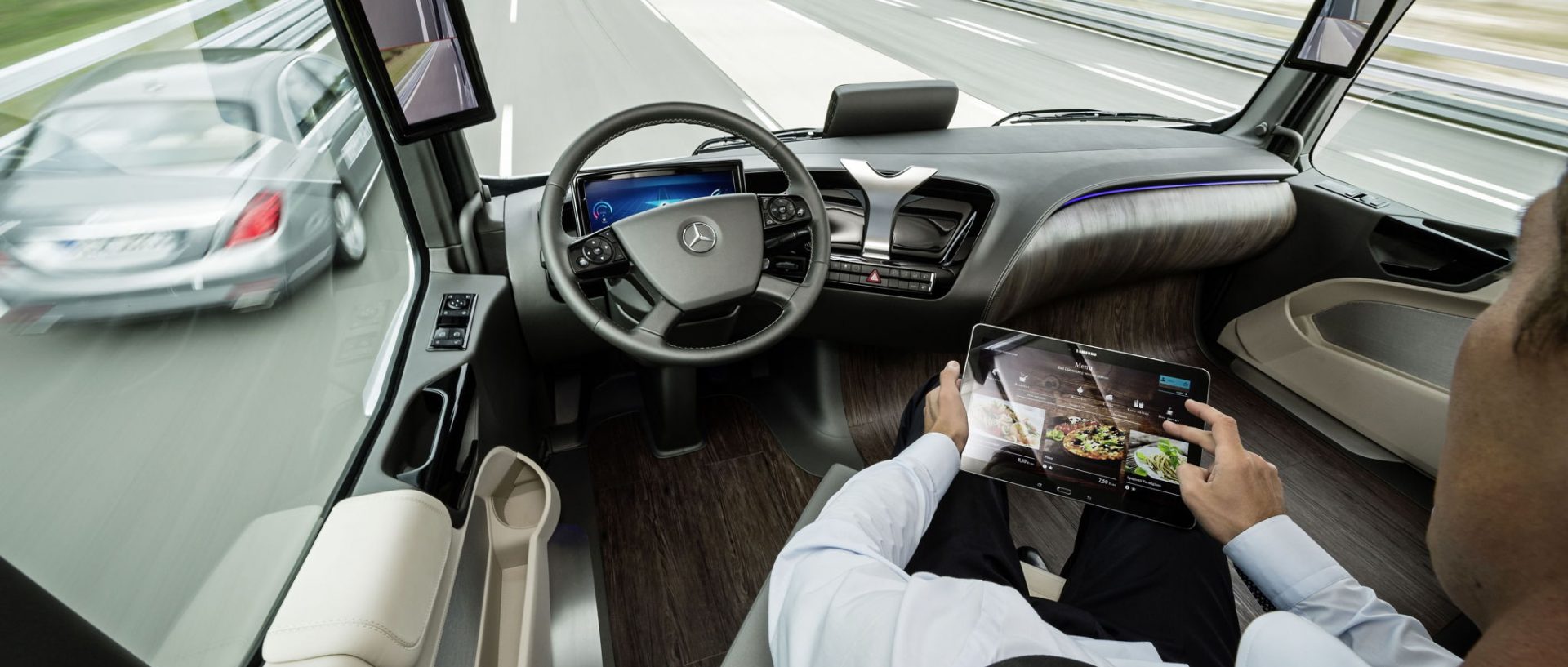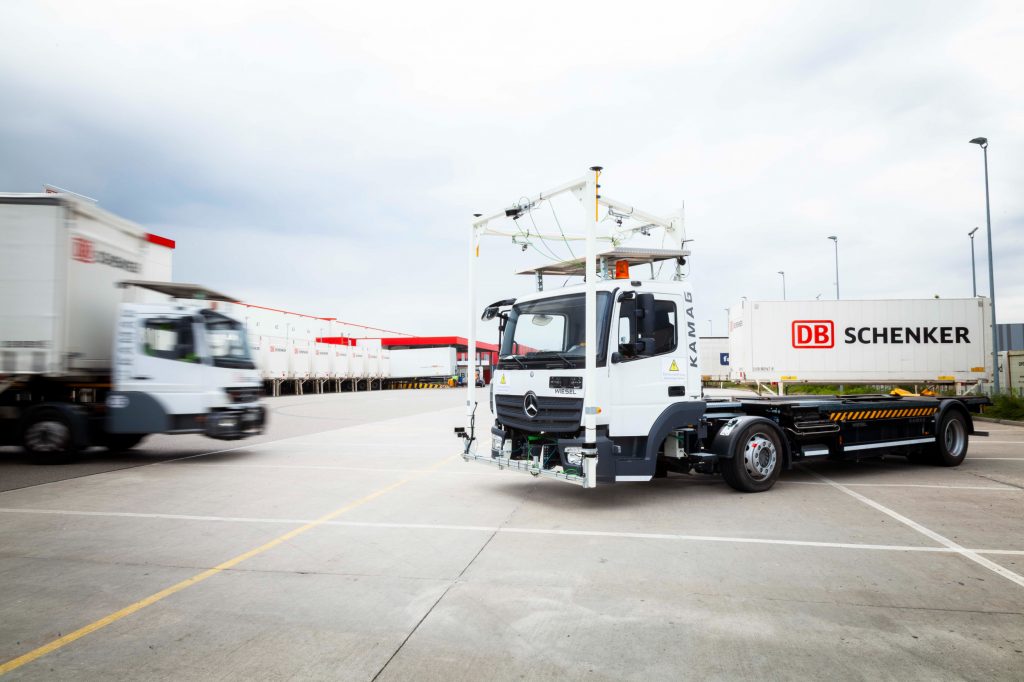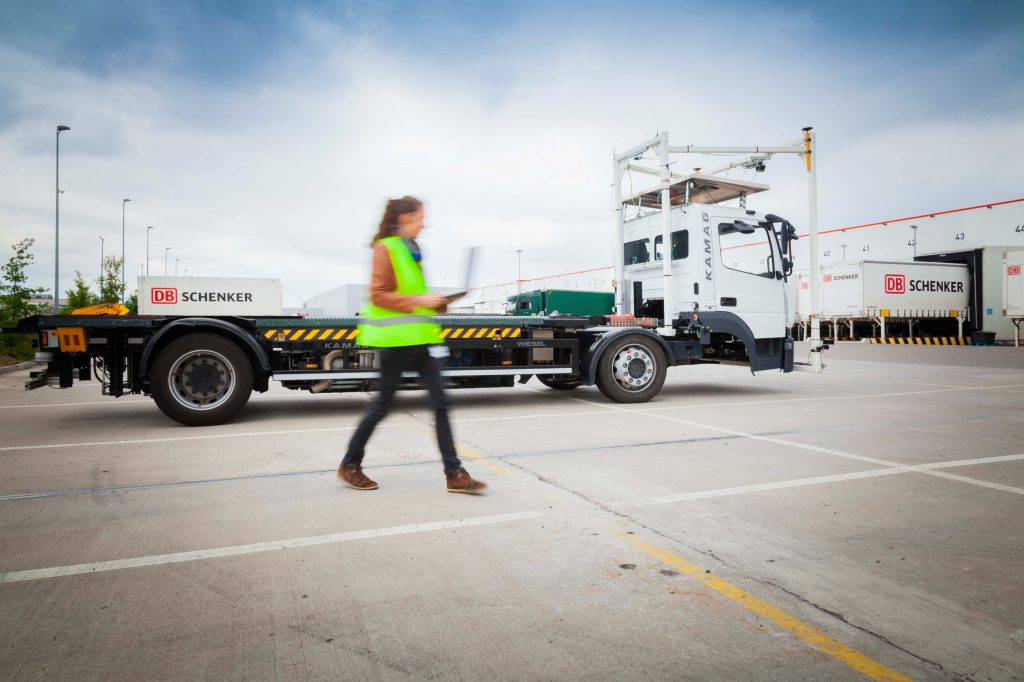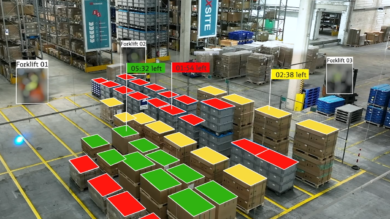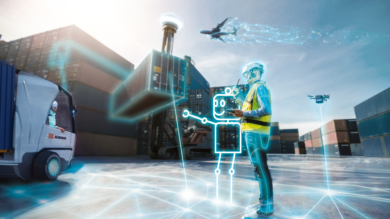We all know David Hasselhoff in the television show Knight Rider, in which he has a car that can drive and chase criminals all by itself. In 1982, when the television show was produced, nobody really believed that this could be reality someday. Although a car that chases criminals by itself is still science fiction, experts now know that driving autonomously can be efficient, less cost intensive and safer. Autonomous driving in the logistics industry is becoming increasingly interesting, due to resource and cost efficiency when transporting goods. However, there are also challenges and questions of ethics that must be considered for future development.
The 1990s – When it all began
The scientist Ernst Dickmanns developed the first pretest vehicle which was trialed on especially adapted roads. By 1994, the first vehicle was driving longer distances with a speed up to 130 kilometers per hour. The help of a human driver, however, was still necessary in order to initiate autonomous maneuvers. In 2013, Mercedes-Benz became the first automotive company to successfully build an autonomous car, which drove from Mannheim to Pforzheim in Germany.
In 2014, Mercedes-Benz also became the first company to present an autonomous truck. Just one year later, a partly automated truck received the first road license in the US, and in 2019, the first fully autonomous truck drove on a public road between two warehouses in Sweden. Today, autonomous trucks have high relevance both for automotive companies and for logistics service providers.
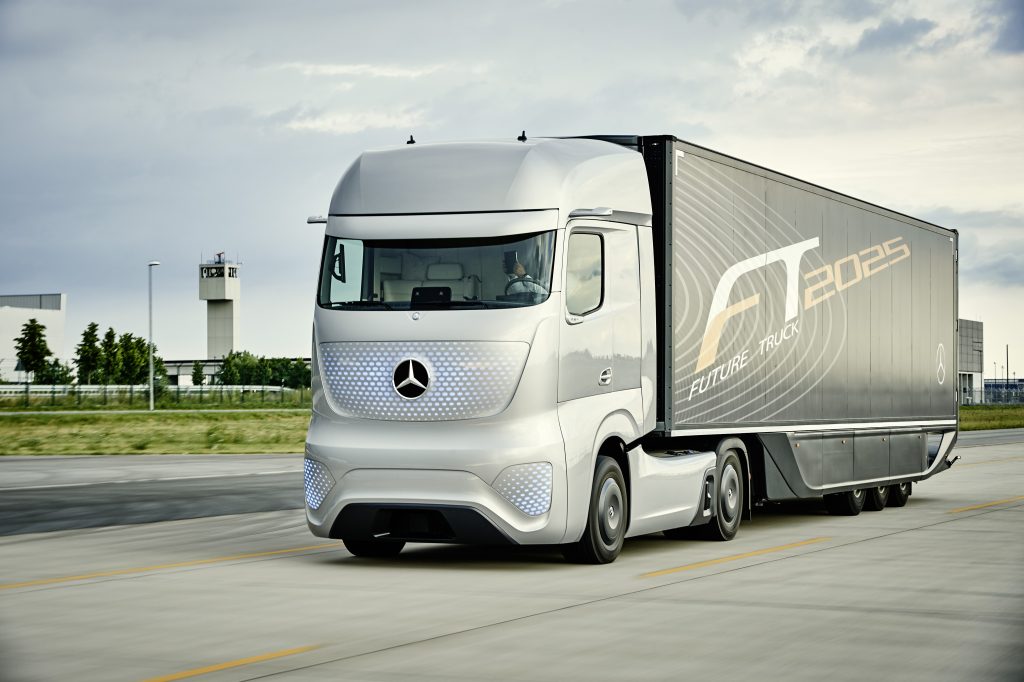
Source: Daimler
Resource and efficiency benefits
Autonomous trucks have the potential to bring major benefits to logistics service providers – particularly in the fields of resources and efficiency.
When it comes to resources, it is no secret that the industry is struggling with a lack of truck drivers. The International Road Transport Union forecasts a 36 percent lack of truck drivers in 2020. Autonomous trucks, which have no need for a driver, could be a good solution to this issue.
Furthermore, autonomous trucks have the potential to save time and space, thereby increasing efficiency and productivity. Time is saved by their ability to operate 24 hours per day and 7 days per week. When it comes to the spatial component, no driver’s cabin is needed – creating more space inside the vehicle.
Overcoming challenges
Although autonomous driving sounds like a great solution, the concept must be developed further to overcome specific challenges.
From a technical point of view, autonomous driving on an empty route in a rural area is a milestone which has already been reached – but driving with large traffic volumes in an urban area will be much more complicated.
Furthermore, each developer of autonomous vehicles will have to abide by local rules and regulations. These are not always aligned by the government, since the concept is so new.
“Progress must not stop at national borders. Legislation must keep up with technical progress otherwise paramount innovations for automated and autonomous driving cannot be brought to the road. Legal certainty is a prerequisite for the acceptance of autonomous driving within society. For this reason, we quickly need an international harmonization of the legal framework.”
Close cooperation between governments and the automotive industry will be essential to develop autonomous driving further.
In addition to the administrative and technical obstacles, there is also a question of ethics: What happens if an accident or unexpected situation arises? Artificial intelligence, which forms the basis of the software powering an autonomous vehicle, must be prepared for every situation.
Three questions to
Dr.-Ing. Stephan Müller
German Aerospace Center
- What are the main results of your ATLaS project which analyzes the development of autonomous driving??
- The main findings of the ATLaS project can be summarized as follows: Platooning and non-driving activities are not the main application areas of automated and connected driving but they are poorly beneficial for logistic companies. It is about driverless vehicles within ideally 10 years to counteract the driver shortage and cost pressure. The introduction of driverless trucks can be expected to lead to a strong shift from rail to road and to market consolidation in which small and medium-sized companies are squeezed out of the market.
- Why is it so important for the logistics industry to invest in this development of autonomous driving?
- Initially, the technologies can be a solution to driver shortages and cost pressures, as well as enabling further efficiency benefits in a largely automated logistics world. However, what sounds like a miracle technology at first will probably lead to a compulsion to invest, because those who do not invest in the cost and efficiency potentials will simply be too expensive and inefficient in the future compared to the rest of the industry. I would expect that automation technology tailored to the users (logistics companies and online retailer) will be a sure-fire success.
- When do you think autonomous driving could be reality in logistics?
- I think that over the next 10 years we will see an evolutionary process in which the driver assistance systems in trucks will be developed to the point where they are able to take over the driving task themselves in some road sections o rather traffic conditions. I expect the highly benefit-generating technology to be a robust technology in 15 years at the earliest – rather later, because the last 20% of development is the most expensive ad often underestimated.
Testing within the logistics industry
To overcome these challenges with answers and solutions, autonomous driving is already being tested by logistics service providers in close collaboration with industry partners. In Leipzig, Germany, for example, Fraunhofer IML is cooperating with DB Schenker, Kamag and Wiferion to test the possibility of driving an autonomous truck to shuttle empties between two storage depots. In 2022, the trial will be expanded to test an autonomous electric truck.
Whether the logistics industry will be able to use autonomous trucks in commercial operations on a large scale is speculation right now. It is clear that autonomous driving still presents technical as well as socio-economic challenges. However, it could help logistics service providers to be more efficient, reduce costs and compensate for the lack of truck drivers.
Published: December 2020


